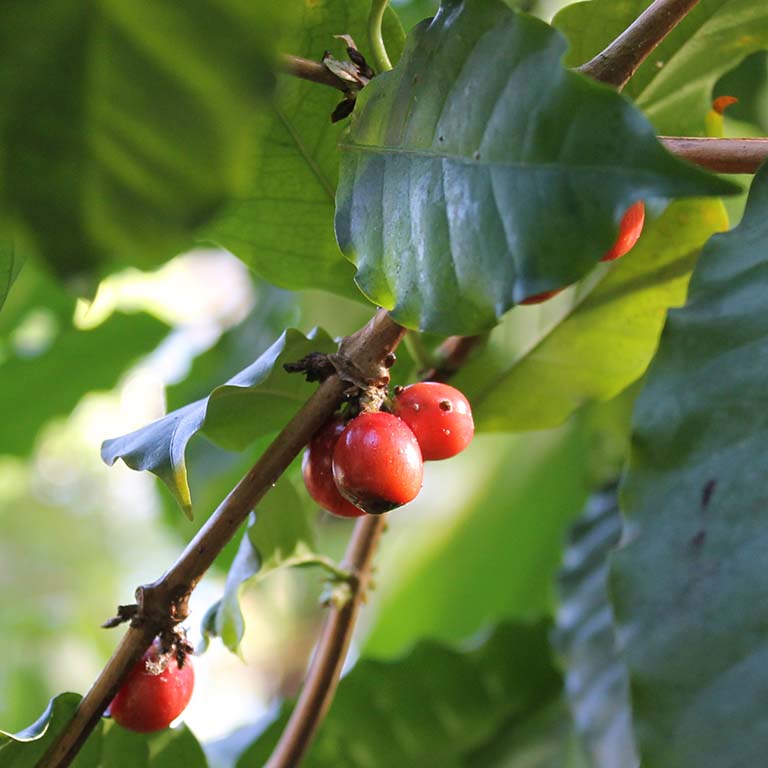Family: Rubiaceae
Scientific name: Coffea arabica
Common name: Arabian coffee, mountain coffee
Native of: Yemen's mountainous regions, southwestern Ethiopia highlands
Greenhouse location: Rooms C and J
Family: Rubiaceae
Scientific name: Coffea arabica
Common name: Arabian coffee, mountain coffee
Native of: Yemen's mountainous regions, southwestern Ethiopia highlands
Greenhouse location: Rooms C and J

Coffea arabica produces 60 percent of the world's coffee. It was domesticated at least by the 12th century in Yemen.
The fragrance of its small, white flowers is similar to the sweet smell of jasmine flowers. The species was originally named Jasminum arabicum, but was reclassified into its own genus Coffea in 1737 by Linnaeus.
The fruits are ready for harvest when they ripen to a dark, glossy red (referred to as "cherries"). Each "cherry" usually contains 2 seeds ("beans"). Because the fruits ripen at different times, they must be handpicked to obtain quality "beans" for roasting.
Because almost all C. arabica cultivated during the past 200 years came from a few Ethiopian plants, its genetic variation is very limited and relies on conserving wild populations. Plantations, however, are exposing wild genotypes to the cultivars, thus threatening the genetic integrity of wild coffee.